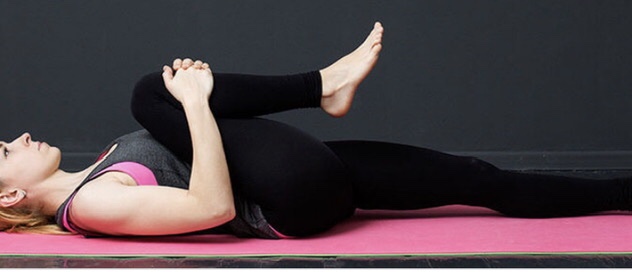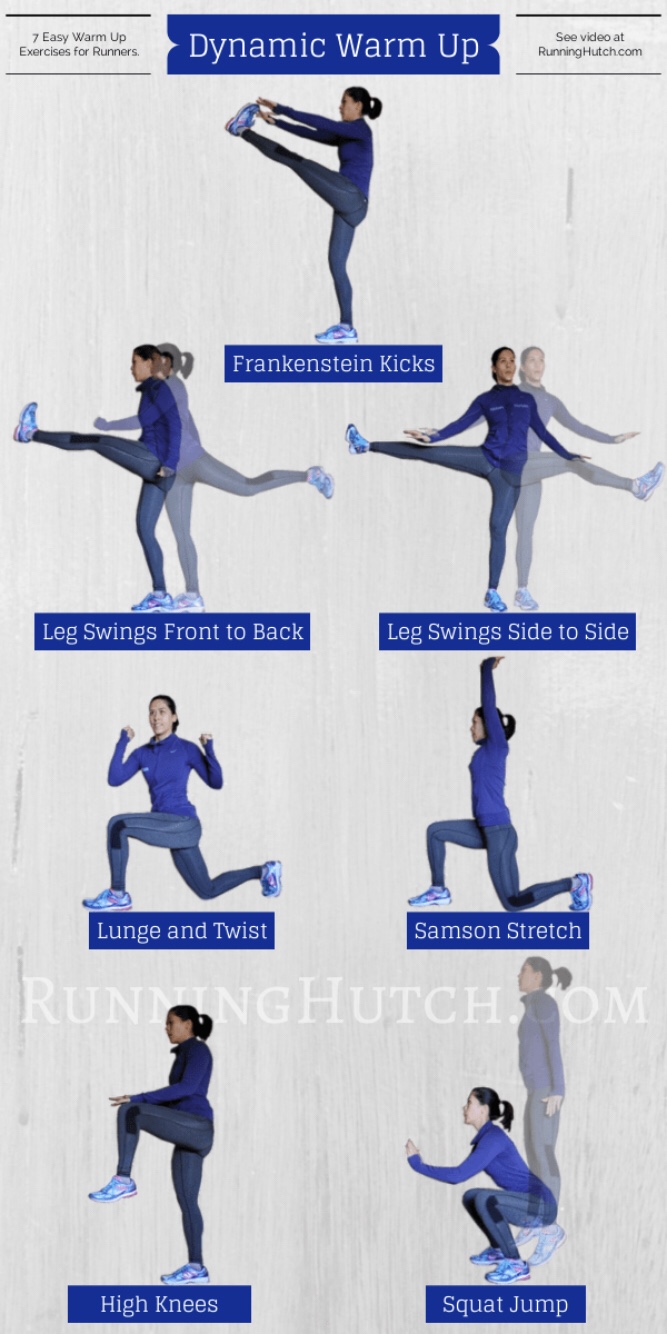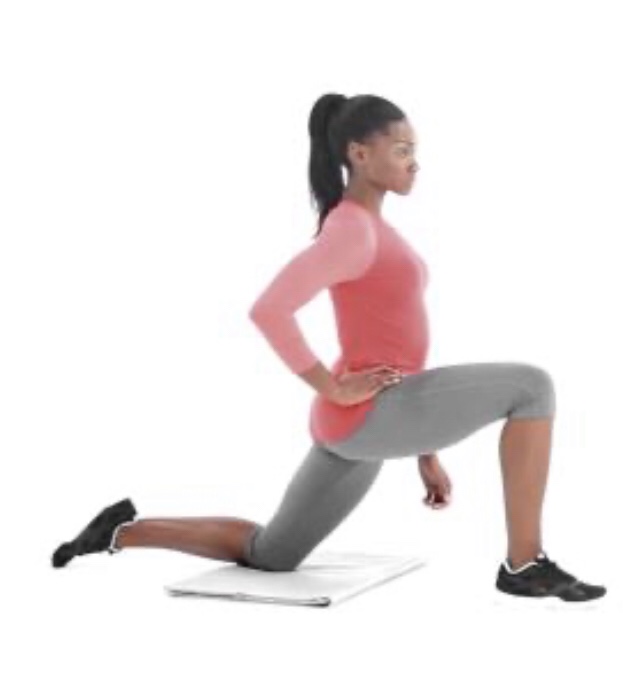Author: Laura B Cornely, NASM Certified Personal Trainer
 The first method of warming up or stretching that I mentioned for me would take place in a circle is known as static stretching. Static stretching is performed by holding a position without moving for a matter of seconds most often at end range[1] , or the furthest position one’s body can stretch and their limit of how much pull they can tolerate[2]. Static stretching has its benefits but research has started to show that holding a stretch still for an extended amount of time actually diminishes muscle efficiency in recreational or competitive fitness[1]. More specifically, holding a stretch before exercise actually makes it more difficult for your muscles to contract as much as they can while exercising[1]. Why is this true? Well, imagine that you are pulling a brand new rubber band on either end and hold it there for 20 seconds. Then you repeat that action two more time. After that, the rubber band will not be able to immediately come back very tightly as it once was. Now, our bodies and muscles thankfully aren’t exactly like rubber bands so we would eventually be able to contract normally, but the significance here is in holding a long stretch and then expecting to jump right into athletic activity right away; which isn’t the best plan.
The first method of warming up or stretching that I mentioned for me would take place in a circle is known as static stretching. Static stretching is performed by holding a position without moving for a matter of seconds most often at end range[1] , or the furthest position one’s body can stretch and their limit of how much pull they can tolerate[2]. Static stretching has its benefits but research has started to show that holding a stretch still for an extended amount of time actually diminishes muscle efficiency in recreational or competitive fitness[1]. More specifically, holding a stretch before exercise actually makes it more difficult for your muscles to contract as much as they can while exercising[1]. Why is this true? Well, imagine that you are pulling a brand new rubber band on either end and hold it there for 20 seconds. Then you repeat that action two more time. After that, the rubber band will not be able to immediately come back very tightly as it once was. Now, our bodies and muscles thankfully aren’t exactly like rubber bands so we would eventually be able to contract normally, but the significance here is in holding a long stretch and then expecting to jump right into athletic activity right away; which isn’t the best plan.
 https://www.runninghutch.com
The method of warming up my team would always do on game day is known as dynamic stretching. Dynamic stretching involves movement throughout a range that likely resembles the motion one goes through during physical activity[1]. Dynamic stretching basically prepares your muscles to go through the very motions they are about to do. Because of this, dynamic stretching is specific in targeting muscles that will need to be active as opposed to targeting the entire muscle group or limb. This method is known to improve the body’s ability to contract enough and efficiently enough for more intense exercise to come[1]. To help add a visual, imagine you get another rubber band and this time, you pull it apart on either side just a little bit and let it come back in the same way repeatedly twenty times. Now, when you want to pull the band apart further but still repeatedly, it’ll be easier. Warming up your body by stretching this way can help decrease your chance of injury and cramping while exercising[1]. As you may already know, exercise occurs when muscles are intentionally contracting and relaxing over and over again, the easier it is for your muscles to do that, the more effective your workout will be.
https://www.runninghutch.com
The method of warming up my team would always do on game day is known as dynamic stretching. Dynamic stretching involves movement throughout a range that likely resembles the motion one goes through during physical activity[1]. Dynamic stretching basically prepares your muscles to go through the very motions they are about to do. Because of this, dynamic stretching is specific in targeting muscles that will need to be active as opposed to targeting the entire muscle group or limb. This method is known to improve the body’s ability to contract enough and efficiently enough for more intense exercise to come[1]. To help add a visual, imagine you get another rubber band and this time, you pull it apart on either side just a little bit and let it come back in the same way repeatedly twenty times. Now, when you want to pull the band apart further but still repeatedly, it’ll be easier. Warming up your body by stretching this way can help decrease your chance of injury and cramping while exercising[1]. As you may already know, exercise occurs when muscles are intentionally contracting and relaxing over and over again, the easier it is for your muscles to do that, the more effective your workout will be.

Introduction
As a teenage athlete, I recall most often at some point either before basketball practice or a game, being on the floor in a circle with my teammates for our pre-sport stretches. The team captain would start off the count with odd numbers and the rest of us would follow saying the even numbers that succeeded them. If you’ve ever played a competitive team sport, you’ve probably experienced some form of that type of stretching ritual growing up or as an athletic adult. My team would count up to either 10 or 20 and we would hold various stretches for that amount of time right before running or doing any other type of sport related activity. Because this was what I knew and experienced as an athlete, I took these same practices to my team as an assistant coach. As far as I knew, this is how we stretch. Now more exclusively to our basketball games, we would do different things as a team to warm our bodies up. We would do different drills like high knees, butt kicks, karaoke foot drills and ect to half court and back while the other team sometimes did their version of the same. At the time, I didn’t realize the difference between these two types of warm ups. Sometimes we did both and other times just one but after observing as a manager for a Division I Women’s Basketball team, and spending pre-season with my Division III team, stretches in a circle, although sometimes there were less prevalent. Now after learning from physical therapist, earning my personal training certification and establishing my own workout regimen, I realize that it’s very important how we warm our bodies up; and we weren’t always necessarily always taught the right way as athletes.Static Stretching
 The first method of warming up or stretching that I mentioned for me would take place in a circle is known as static stretching. Static stretching is performed by holding a position without moving for a matter of seconds most often at end range[1] , or the furthest position one’s body can stretch and their limit of how much pull they can tolerate[2]. Static stretching has its benefits but research has started to show that holding a stretch still for an extended amount of time actually diminishes muscle efficiency in recreational or competitive fitness[1]. More specifically, holding a stretch before exercise actually makes it more difficult for your muscles to contract as much as they can while exercising[1]. Why is this true? Well, imagine that you are pulling a brand new rubber band on either end and hold it there for 20 seconds. Then you repeat that action two more time. After that, the rubber band will not be able to immediately come back very tightly as it once was. Now, our bodies and muscles thankfully aren’t exactly like rubber bands so we would eventually be able to contract normally, but the significance here is in holding a long stretch and then expecting to jump right into athletic activity right away; which isn’t the best plan.
The first method of warming up or stretching that I mentioned for me would take place in a circle is known as static stretching. Static stretching is performed by holding a position without moving for a matter of seconds most often at end range[1] , or the furthest position one’s body can stretch and their limit of how much pull they can tolerate[2]. Static stretching has its benefits but research has started to show that holding a stretch still for an extended amount of time actually diminishes muscle efficiency in recreational or competitive fitness[1]. More specifically, holding a stretch before exercise actually makes it more difficult for your muscles to contract as much as they can while exercising[1]. Why is this true? Well, imagine that you are pulling a brand new rubber band on either end and hold it there for 20 seconds. Then you repeat that action two more time. After that, the rubber band will not be able to immediately come back very tightly as it once was. Now, our bodies and muscles thankfully aren’t exactly like rubber bands so we would eventually be able to contract normally, but the significance here is in holding a long stretch and then expecting to jump right into athletic activity right away; which isn’t the best plan.
Dynamic Stretching
 https://www.runninghutch.com
The method of warming up my team would always do on game day is known as dynamic stretching. Dynamic stretching involves movement throughout a range that likely resembles the motion one goes through during physical activity[1]. Dynamic stretching basically prepares your muscles to go through the very motions they are about to do. Because of this, dynamic stretching is specific in targeting muscles that will need to be active as opposed to targeting the entire muscle group or limb. This method is known to improve the body’s ability to contract enough and efficiently enough for more intense exercise to come[1]. To help add a visual, imagine you get another rubber band and this time, you pull it apart on either side just a little bit and let it come back in the same way repeatedly twenty times. Now, when you want to pull the band apart further but still repeatedly, it’ll be easier. Warming up your body by stretching this way can help decrease your chance of injury and cramping while exercising[1]. As you may already know, exercise occurs when muscles are intentionally contracting and relaxing over and over again, the easier it is for your muscles to do that, the more effective your workout will be.
https://www.runninghutch.com
The method of warming up my team would always do on game day is known as dynamic stretching. Dynamic stretching involves movement throughout a range that likely resembles the motion one goes through during physical activity[1]. Dynamic stretching basically prepares your muscles to go through the very motions they are about to do. Because of this, dynamic stretching is specific in targeting muscles that will need to be active as opposed to targeting the entire muscle group or limb. This method is known to improve the body’s ability to contract enough and efficiently enough for more intense exercise to come[1]. To help add a visual, imagine you get another rubber band and this time, you pull it apart on either side just a little bit and let it come back in the same way repeatedly twenty times. Now, when you want to pull the band apart further but still repeatedly, it’ll be easier. Warming up your body by stretching this way can help decrease your chance of injury and cramping while exercising[1]. As you may already know, exercise occurs when muscles are intentionally contracting and relaxing over and over again, the easier it is for your muscles to do that, the more effective your workout will be.
More of What the Science Says
Over time, researchers have found that static stretches before exercise most likely temporarily creates a disadvantage for athletes[1]. For example, if a runner, basketball player and soccer player all stretch statically before their respective sports, they would have a slower run, not be able to jump as high as they would for a rebound or not be able to move their feet quickly enough on a soccer field[1]. The afore mentioned minimized muscle contraction that occurs as well has been demonstrated in both male and female elite athletes[1]. The greatest advantage in dynamic stretching is being able to get through a full range of motion as opposed to staying at the hardest part of a motion[1]. This increases the muscle’s ability to strengthen and therefore takes unnecessary pressure off of one’s joints and increases limb stability[1]. Based on this, we know that static stretching is definitely not best before your workout; so when is static stretching recommended?There’s a Time and a Place
Although you may forget to or just try to avoid it, stretching statically is great for your body after your workout[3]. Holding a stretch in place helps the body loosen up and recover after a good workout[3]. Static stretching after your workout minimizes the likelihood of stiff limbs, increases blood flow throughout your body and diminishes muscle soreness[3]. Sometimes athletes can become painfully sore or experience DOMS(delayed onset muscle soreness). This just means you may feel sore as late as 48 hours after a workout, but being sure to stretch after your workout will help avoid that. It’s important to make sure that while stretching you take deep breaths, move into position slowly and steadily, and that you know your limits; don’t try to push through a stretch further than you are capable[3]. As long as you stretch consistently and correctly, you will improve in flexibility over time.




